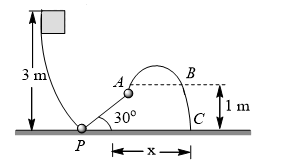Question
The number of ways of distributing 8 identical balls in 3 distinct boxes so that none of the boxes is empty is-
- 5
- 21
- 38
- 8C3

By choosing some items from a set and creating subsets, permutation and combination are two approaches to represent a group of objects. It outlines the numerous configurations for a particular set of data. Permutations are the selection of data or objects from a set, whereas combinations are the order in which they are represented. Here we have to find the number of ways of distributing 8 identical balls in 3 distinct boxes so that none of the boxes is empty.
The correct answer is: 21
A permutation is the non-replaceable selection of r items from a set of n items in which the order is important.

A combination is created by selecting r items from a group of n items without replacing them and without regard to their order.

Here we have given the word as: MISSISSIPPI.
Here we have to find the number of ways of distributing 8 identical balls in 3 distinct boxes so that none of the boxes is empty. So:

I = 4 times,
S= 4 times,
P = 2 times,
M= 1 time
So the number of words will be:

The different ways in which items from a set may be chosen, usually without replacement, to construct subsets, are called permutations and combinations. When the order of the selection is a consideration, this selection of subsets is referred to as a permutation; when it is not, it is referred to as a combination. So the final answer is 21.
Related Questions to study
A mass of  strikes the wall with speed
strikes the wall with speed  at an angle as shown in figure and it rebounds with the same speed. If the contact time is
at an angle as shown in figure and it rebounds with the same speed. If the contact time is  , what is the force applied on the mass by the wall
, what is the force applied on the mass by the wall

A mass of  strikes the wall with speed
strikes the wall with speed  at an angle as shown in figure and it rebounds with the same speed. If the contact time is
at an angle as shown in figure and it rebounds with the same speed. If the contact time is  , what is the force applied on the mass by the wall
, what is the force applied on the mass by the wall

If the locus of the mid points of the chords of the ellipse  , drawn parallel to
, drawn parallel to  is
is  then
then 
If the locus of the mid points of the chords of the ellipse  , drawn parallel to
, drawn parallel to  is
is  then
then 
If nCr denotes the number of combinations of n things taken r at a time, then the expression nCr+1 + nCr –1 + 2 × nCr equals-
The different ways in which items from a set may be chosen, usually without replacement, to construct subsets, are called permutations and combinations. When the order of the selection is a consideration, this selection of subsets is referred to as a permutation; when it is not, it is referred to as a combination. So the final answer is .
If nCr denotes the number of combinations of n things taken r at a time, then the expression nCr+1 + nCr –1 + 2 × nCr equals-
The different ways in which items from a set may be chosen, usually without replacement, to construct subsets, are called permutations and combinations. When the order of the selection is a consideration, this selection of subsets is referred to as a permutation; when it is not, it is referred to as a combination. So the final answer is .





